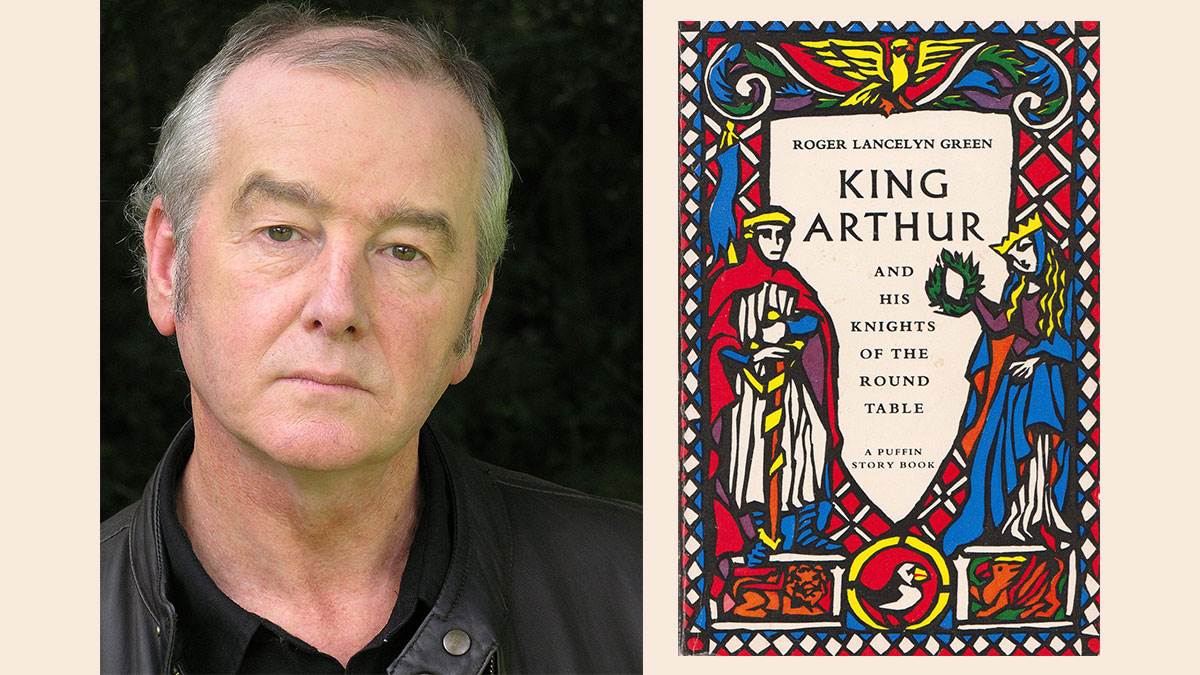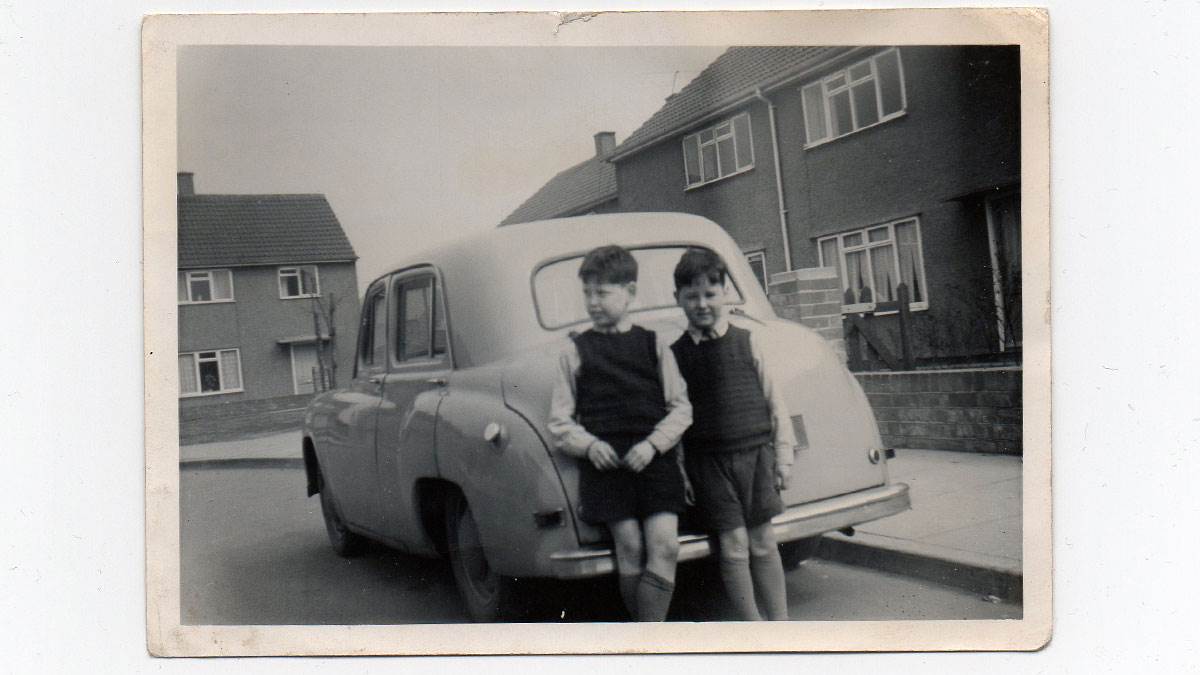The Book That Made Me: David Almond
Published on: 20 Mawrth 2019 Author: David Almond
What's the childhood book that made you who you are today?
The adventures of King Arthur seduced David Almond as a boy. He returned to them later, when he was close to giving up on being a writer – and those stories made him consider writing for children.
 Author David Almond and Roger Lancelyn Green's King Arthur and His Knights of the Round Table
Author David Almond and Roger Lancelyn Green's King Arthur and His Knights of the Round Table
Sometimes it’s the feel of a book that draws you in, the physical beauty of it, the circumstances of its arrival in your world. I went downstairs on a Christmas morning, a bleary-eyed, excited nine year old. There it was lying on the sofa: my stocking, tightly stretched by the paperback book inside. Slowly, I teased the book out. Roger Lancelyn Green,King Arthur and His Knights of the Round Table.
A lovely cover like a stained-glass window. Three hundred or so beautifully-printed pages. And such illustrations along with the print: sharp black-and-white gorgeous things by Lotte Reiniger. They each had a line of tantalising prose beneath: ‘The barge moved as if unseen hands drew it towards the sword’; ‘The Green Knight mounted, his head in his hand’; ‘And there he wandered, his wits quite gone from him’.
Magic and miracle
I was seduced. I chomped on Christmas chocolate and started to read. Here’s Arthur, an ordinary-seeming kid who performs the miraculous in such an offhand way. His brother needs a sword? ‘I know,’ says Arthur. ‘I saw one sticking in an anvil in the churchyard. I’ll fetch that: it’s doing no good there.’ And with the single tug of his young arm, he confronts his destiny and a whole new world order begins to be established.
 David Almond as a young boy (on the right)
David Almond as a young boy (on the right)
Over the next few days, I was swept way from Tyneside by Green’s prose, by Reiniger’s art. I was with Arthur in Arthur’s world. Bloody accounts of limbs being hacked off sat side by side with haunting descriptions of magic and miracle. The knights’ quests took them to places of darkness and doom, to the ante rooms of Heaven itself. There were dragons, witches, wise men and fools.
There was love, desire, treachery and sin. And all presented through prose that was heightened and beguiling, but also clear and forward-moving, never self-regarding or portentous.
Striving to be published
I loved this book as a boy. I kept it through all my teenage years. Then I left home and lost it. Many more books would work similar magic as I grew, of course. I recall the feel of drawing out Hemingway’s First Forty Nine from the shelves of our local library, discovering with a shock of recognition a kind of syntax and rhythm that echoed my own. Reading Marquez on a long train journey through France, gasping as Remedios the Beauty took flight.
I’d always known I’d be writer. I was striving to be published. I wrote short stories and poems that appeared in little magazines with a few dozen readers. I wrote a novel that took me five years to finish. It was rejected by every UK publisher. I spat, shrugged, and carried on. I wrote for "adults", but I kept exploring childhood experience, describing the council estates, playing fields and beaches that I’d known as a boy; creating versions of the joys and tragedies from my own young life.
A children's book for everyone
One summer’s day in Norfolk, I came upon King Arthur again. There it was on a market stall, that lovely book, its few hundred printed pages, its beautiful stained-glass cover. I lifted it up and back I went to that Christmas morning. I was nine years old in a little Tyneside council house. The sword was drawn again. The realm of Logres was re-established. Arthur and his knights set off again on their joyful, dreadful quests. I saw through adult eyes the genius of Green and of Reiniger, their astonishing blend of image and word.
It was a children’s book, but like the best children’s books, it was for everyone. It was for me, as it always had been.
Soon afterwards, I found myself writing a tale of a boy who sets off on a quest to Heaven to discover his lost sister. I could feel Green and Reiniger in it, and also Hemingway and Marquez. I thought it was a story for adults, but it seemed too childlike, too sentimental, and I put it away. But other similar stories quickly followed in its wake. And I woke up, as I had on that Christmas morning.
I’d write books that might sit on shelves alongside those of Green and Reinger. I accepted what seemed to be a kind of destiny. My quest was to become a children’s writer.
Topics: Myths and legends, Classics, Features, The Book That Made Me






Add a comment